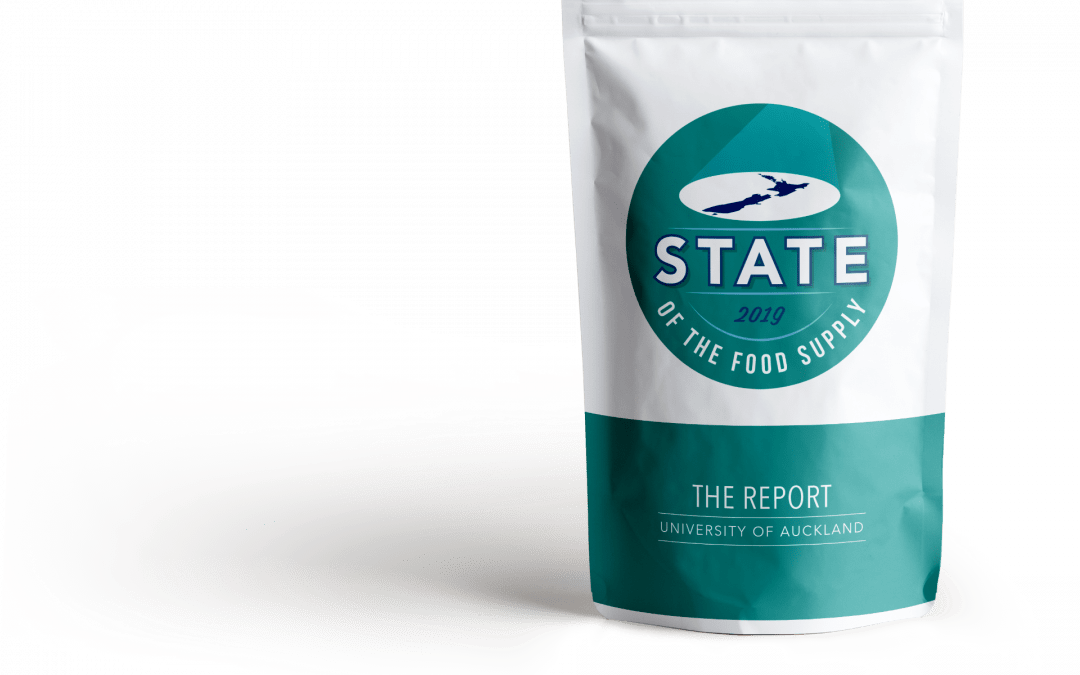This State of the Food Supply report provides the first annual snapshot of the healthiness of the NZ packaged food supply . Researchers analysed over 13 000 packaged foods and beverages in New Zealand supermarkets. Nutritional quality was assessed by the Health Star Rating, classified as core or discretionary, by level of processing and nutrient composition. The product portfolios of leading packaged food and beverage manufacturers were assessed.
Three-fifths of products had a Health Star Rating under 3.5, half are considered discretionary (not a necessary part of the diet) and seventy percent were considered ultra-processed.
The authors recommend the Health Star Ratings should be mandatory on labels, the Government should set targets for voluntary reformulation of composition, food manufacturers should increase the proportion of minimally processed foods in their portfolio and food retailers should continue to take an active role in improving the healthiness of the NZ food supply.
Press release August 17 2019: Nicola Shepheard | Media Adviser
Ultra-processed, unhealthy packaged food dominates – report
A new in-depth snapshot of packaged food sold in New Zealand supermarkets reveals most of it is unhealthy, with nearly 70 percent classified as ultra-processed.
Authors are calling for Health Star Rating labels to be made compulsory as part of a review of the system, and for Government to set food reformulation targets.
The inaugural New Zealand State of the Food Supply report, released today, is produced by a team of public health experts at the University of Auckland in collaboration with The George Institute in Global Health in Australia. It aims to support government, business and community efforts to help New Zealanders eat a better diet.
“A poor diet is the leading cause of early death in Aotearoa New Zealand, accounting for nearly 20 percent of illness and premature death,” says report author Dr Sally Mackay, a research fellow in the University’s Faculty of Medical and Health Sciences.
“Getting healthier foods on the shelves makes it easier for consumers to make a healthy choice, which is key to curbing the obesity epidemic and diet-related ill health. But first we need to get a handle on what’s already available.”
Researchers analysed 13,000 packaged food items, and then looked at the largest food and beverage manufacturers by market share. They used the Health Star Rating (0.5-5 stars) criteria, which was jointly developed by New Zealand and Australian governments and the food industry, as well as identifying discretionary foods (ones not necessary in a person’s diet).
Key findings included:
- Half (52 percent) of packaged foods on supermarket shelves are discretionary foods.
- Over two-thirds (69 percent) of packaged foods were considered ultra-processed, that is ready-to-eat or drink items based on refined substances often with added sugar, salt, fat and additives.
- Nearly three-fifths (59 percent) of the packaged foods in our supermarkets have a low star rating (less than 3.5). Even in categories where you would expect healthier options, such as muesli bars and yoghurts, the mean rating is low.
- The healthiest major food category was packaged fruit and vegetables, with a mean rating of 3.9 (this includes added-sugar canned fruits and jams). The healthiest minor food categories were bread, breakfast cereals, couscous, pasta, rice, milk, nuts, fruit and vegetables, and meat alternatives.
- Non-alcoholic drinks generally had a low rating (mean 2.3) and were classified as discretionary (62 percent) and ultra-processed (85 percent). Fruit and vegetable juices and energy drinks had the highest mean sugar content (9.4ml/100ml and 7.4ml/100ml respectively).
- Only three companies had a mean rating of 3.5 or above – Sanitarium, McCain Foods and Sealord had an average of 4.1, 3.9 and 3.8 respectively.
Delving into food categories revealed that 79 percent of breads and 68 percent of breakfast cereals had a star rating at or above 3.5. High-performers included Goodman Fielder’s breads (88 percent at or above 3.5) and Nestle’s breakfast cereals (100 percent). Dairyworks had the lowest proportion of ultra-processed products (11 percent) across all categories.
“Companies like these show it’s possible to have healthier products within a category,” says Dr Mackay.
The report notes that most of the country’s top food manufacturers and retailers have made commitments to reformulate products to lower sodium levels, and many to lower sugar in specific food categories.
“But for any substantial change to happen across the food supply, we need the government to take real action by setting targets to lower salt, sugar and saturated fat content,” says Dr Mackay.
The report also argues industry uptake of the Health Star Rating has been too slow at only 21 percent of eligible products, and that all packaged food should be required to carry Health Star labelling.
Dr Mackay: “Consumers have the right to know the healthiness of the products they’re buying.”
The researchers will repeat the report annually to uncover trends. A separate analysis in Australia has revealed that while some Australian food and beverage makers improved the nutritional quality of their products between 2017 and 2018, over that period the average Health Star Rating dropped for half of the 33 largest manufacturers.
State of the Food Supply – New Zealand 2019
